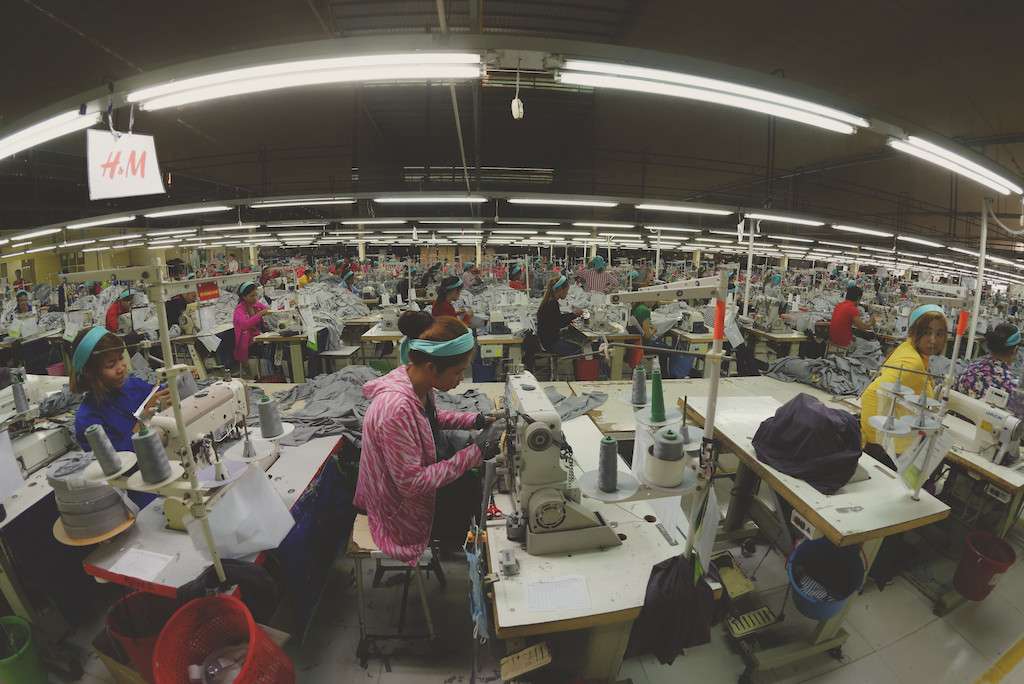True textile recycling is the holy grail of the fashion industry. And as fast-fashion giant H&M faces backlash over its recycled material claims, a new Danish design project could offer widespread solutions.
The Danish Recycling Technologies and Sustainable Textile Product Design (ReSuit), has announced two innovative recycling technologies aimed at tackling the challenge of polyester textile waste. Polyester, which makes up half of all clothing waste worldwide, has long posed a recycling challenge due to its synthetic nature and the complexity of textile waste. ReSuit’s research, conducted over three years, has led to a pioneering solution that could significantly reduce the environmental impact of discarded garments and revolutionize the way we approach the sustainability of clothing, particularly materials previously deemed unrecyclable.
The ReSuit project, spearheaded by the Danish Technological Institute and supported by Innovation Fund Denmark, includes collaborations with Bestseller, Elis Denmark, Behave Green, Design School Kolding, with additional insights from Aarhus University and Fraunhofer-Gesellschaft.

ReSuit’s first process allows for the direct recycling of polyester textiles into new fabrics. Through a dissolution method, this technology separates polyester from dyes and additives, yielding a recycled polyester of such high quality that it can be used in new textile production. This advancement opens up the possibility of a true textile-to-textile recycling loop for polyester garments — a major step forward in reducing waste and conserving resources. ReSuit has also developed a second method, aimed at more complex types of clothing waste. This process employs hydrothermal liquefaction, a technique that applies heat and pressure to transform clothing waste into bio-oil. This oil can then be refined into chemical building blocks essential for producing fuel and naphtha. During this process, the polyester component is converted into terephthalic acid, a fundamental ingredient in creating new polyester.
Fast-fashion’s recycling claims
The innovations come as the apparel industry, which has recently faced calls to establish a robust system for recycling PET polyester, continues to face scrutiny. A recent exposé on fast-fashion retailer H&M says the chain’s recycling claims are questionable. While its Paris flagship location says 79 percent of its polyester comes from recycled sources, critics say the claim is misleading as the polyester typically comes from recycled plastic bottles, not used polyester clothes. Garments made from recycled plastic polyester are difficult to recycle, further adding to the textile waste issue.
Recycling textiles presents numerous challenges, including costly and complex sorting and the difficulty of recycling polyester due to impurities and mixed materials like elastane (spandex). Environmental advocates are calling for an end to polyester use, highlighting its contribution to pollution and the problematic export of textile waste to Africa and Asia. Despite new E.U. regulations aiming to improve textile waste management, there’s a lack of reliable data on waste outcomes. Greenpeace’s Lisa Panhuber says recycling is a “myth” for clothing.

Some brands are considering alternatives like vegetable fibers, but these too have drawbacks, including non-compostability. Organizations like Greenpeace argue that reducing clothing production and increasing the lifespan of existing items through repair, reuse, and upcycling is the most sustainable approach to fashion.
Bestseller, a key partner in the ReSuit project, has leveraged these recent recycling advancements to launch its Circular Design Guide. This initiative aims to influence not only its brands but also the broader textiles sector to adopt more sustainable practices. Camilla Skjønning Jørgensen, Innovation Manager at Bestseller, emphasizes the importance of collaboration in driving sustainability. “At Bestseller, we are fully aware of the challenges in the fashion industry, but we also have the size and expertise to be part of the solution,” she said. That’s why we entered ReSuit with open eyes and an understanding that innovation plays a crucial role in transforming the fashion industry into a more sustainable one.”
Jørgense says innovation is best when it’s collaborative, like the ReSuit project — and the implications of ReSuit’s innovations extend beyond environmental benefits, offering the fashion industry a pathway to reduce its carbon footprint and embrace circular economy principles. Panhuber agrees, particularly when it comes to fast-fashion giants like H&M. “We have to decrease consumption,” she said, urging consumers to “reuse and upcycle”.
Related on Ethos:


